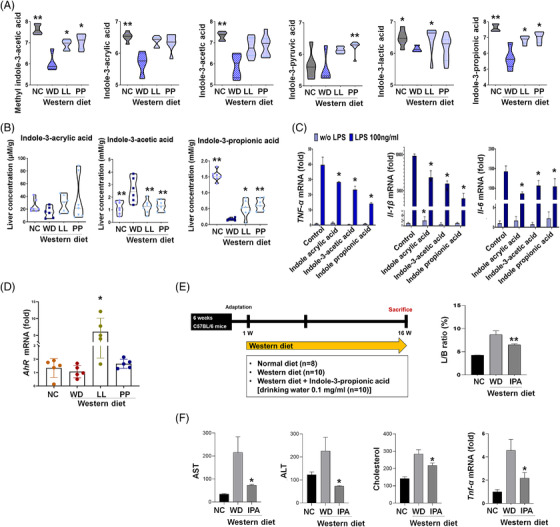FIGURE 6.

Ameliorative effects of gut microbe‐derived indoles on non‐alcoholic fatty liver disease (NAFLD) progression. The levels of indoles in caecal samples (A) and livers (B) in different diet groups (n = 4‐7). The log10‐transformed abundances (ion intensities) are shown as violin plot. *p < 0.05 as compared with WD group by Mann–Whitney U test. **p < 0.05 as compared with WD group by nonparametric Kruskal–Wallis test and Dunn's test adjusted by Benjamini–Hochberg correction. (C) Anti‐inflammatory effects of indoles on Raw 264.7 cell exposed to LPS (100 ng/ml, n = 5). Following the subsequent indole‐treatment (indole acrylic acid, 100 μM; indole‐3‐acetic acid, 500 μM; indole‐propionic acid, 100 μM), inflammatory cytokine gene expression is analyzed based on qRT‐PCR. *p < 0.05. (D) The expression levels of aryl hydrocarbon receptor. (E) Experiment design of WD indole mice model and L/B ratio (F) level of liver enzymes, cholesterol, and cytokine. IPA, indole‐propionic acid; L/B, Liver weight/body weight; LPS, lipopolysaccharides; LL, Lactobacillus lactis; NC, normal control; PP, Pediococcus pentosaceus; qRT‐PCR, quantitative reverse transcription polymerase chain reaction; WD, Western diet
